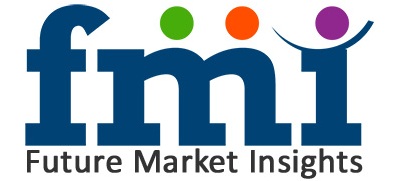The increasing usage of electronic devices, changing lifestyle and hygiene have led to vision-related problems worldwide. The number of patients with vision-related problems have increased and so is the need for vision care products and services. According to the latest report published by the company, the global vision care market size is projected to account for over US$ 127,730 Mn, in terms of value, by 2028 end. The report further projects significant growth with an average CAGR of 7.1% through 2028.
Vision Care Market: Dynamics
According to the World Health Organization (WHO), approximately 285 million people are visually impaired worldwide. Out of these, 39 million people are blind and 246 million people have low vision. Most of the disorders & conditions causing visual impairment & blindness are preventable or readily treatable with known & cost-effective interventions, and normal vision can be restored with the help of eyeglasses, contact lenses or refractive surgery. Ageing is one of the prime factors responsible for vision-related problems. Population aged 65+ years is growing day by day and with it the demand for eye care-related products and solutions is also increasing. This increasing ageing population and the growing demand for vision care products are factors expected to create growth opportunities for the manufacturers globally.
Population aged 65+ years is growing day by day and with it the demand for eye care-related products and solutions is also increasing. This increasing ageing population and the growing demand for vision care products are factors expected to create growth opportunities for the manufacturers globally.
Healthcare initiatives by the Federal health care programs have increased the number of population opting for vision care benefits. Besides, the out-of-pocket costs have reduced due to insurance coverage. Likewise, in the U.S., “The Patient Protection and Affordable Care Act” has defined eye care for pediatric as an essential benefit. This factor, in particular, is likely to play an instrumental role in driving the growth of the vision care market.
With a rapid increase in the internet usage, technological changes and number of research-based industries, the usage of laptops, mobiles, PCs and others electronic devices has increased in the day-to-day life, which is the major factor responsible for eye-related problems. To overcome this alarming situation, “VISION 2020 – The Right to Sight” a global action program is conducted by NGOs and private organizations in collaboration with the WHO to prevent avoidable blindness. Also, “VISION 2020” has initiated global campaigns to raise awareness among governments about the societal effects of blindness and to gather a strong, long-term political & professional commitment to reduce avoidable blindness. “VISION 2020” has taken initiatives to develop & strengthen the primary health/eye care methodology to prevent the avoidable blindness.
The growth of the vision care market is driven by the increase in lens prescriptions and eye care professionals such as optometrists and ophthalmologists. Most of the ageing consumers (65+) have low awareness regarding eye health. Product development, particularly for the ageing population, is a major challenge as ageing consumers tend to suffer from dry eyes due to which fitting of contact lens becomes difficult. Therefore, the products for ageing consumers need more attention.
 Elderly population prefers spectacles over contact lens due to low awareness regarding their benefits. According to the company, the spectacle lenses segment accounted over 40% revenue share in the global vision care market in 2017. However, the growing popularity of contact lens might limit the segment’s growth in the near future. Contact lenses offer vision correction for the entire field of the eye including peripheral vision. Soft contact lenses are safe for daily use and for sports as well. They do not fog and can be discarded if damaged. Besides, they are economic compared to prescribed glasses.
Elderly population prefers spectacles over contact lens due to low awareness regarding their benefits. According to the company, the spectacle lenses segment accounted over 40% revenue share in the global vision care market in 2017. However, the growing popularity of contact lens might limit the segment’s growth in the near future. Contact lenses offer vision correction for the entire field of the eye including peripheral vision. Soft contact lenses are safe for daily use and for sports as well. They do not fog and can be discarded if damaged. Besides, they are economic compared to prescribed glasses.
Vision Care Market: Regional Insights
In Europe and Northern America, more than 1 person in 5 was aged 60 or above in 2017. According to a survey by the WHO, 90% of the visually impaired population is in low- & middle-income countries. A significant share of this population is unaware regarding the preventive care for vision loss, available curative services and quality rehabilitation. Further, the growing number of ageing population with vision disorders in Asia Pacific is likely to boost the growth of the vision care market in Asia Pacific. Increasing geriatric population and rising disposable income in North America is expected to surge the demand for advanced vision care products and solutions. The North America vision care market is estimated to create an absolute $ opportunity worth US$ 21,735 Mn between 2018 and 2028.
Vision Care Market: Segmental Analysis
The company has segmented the global vision care market into spectacle lenses, contact lenses and cleaning & disinfecting solutions. In terms of revenue, the spectacle lenses and contact lenses segments are expected to hold significant shares over the forecast period. In contrary, the cleaning & disinfecting solutions segment in the vision care market is expected to exhibit limited investment opportunities, in terms of revenue, through 2028.
Vision Care Market: Companies
The report tracks some of the key companies operating in the vision care market, such as Bausch and Lomb (Acq. by Valeant Pharmaceuticals), Alcon (sub. Novartis AG), CooperVision and Johnson & Johnson, LUXOTTICA GROUP, Essilor, ZEISS International, Safilo Group and Rodenstock.
For More Information about Vision Care Market: https://www.futuremarketinsights.com/reports/sample/REP-GB-822

















